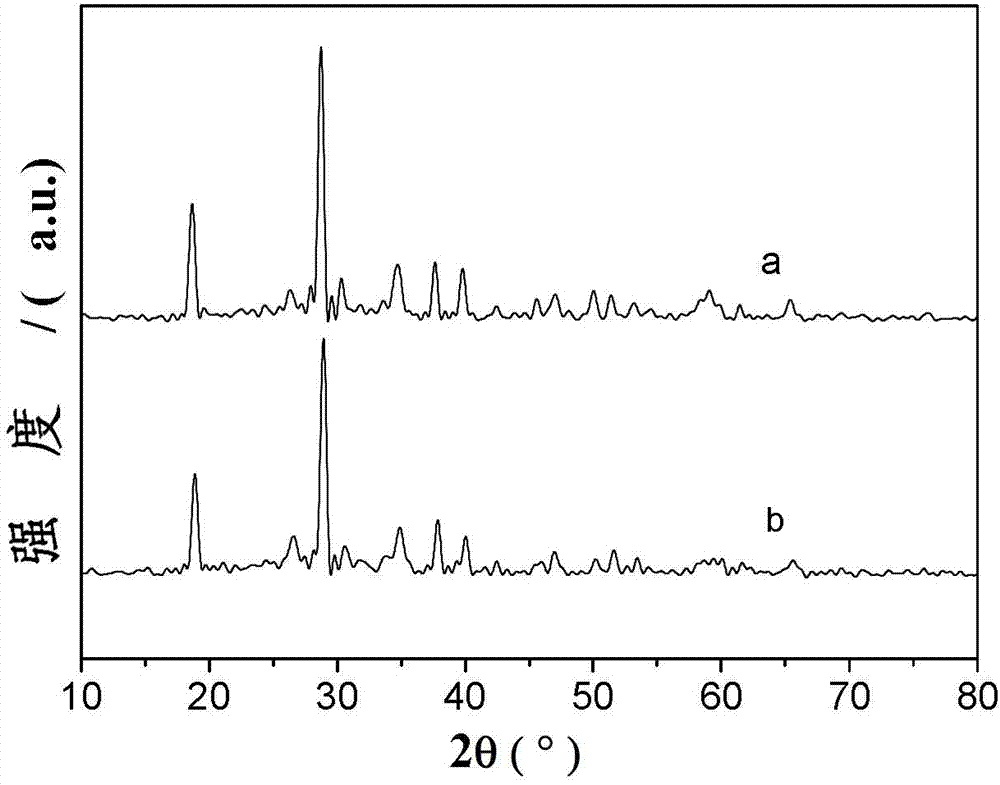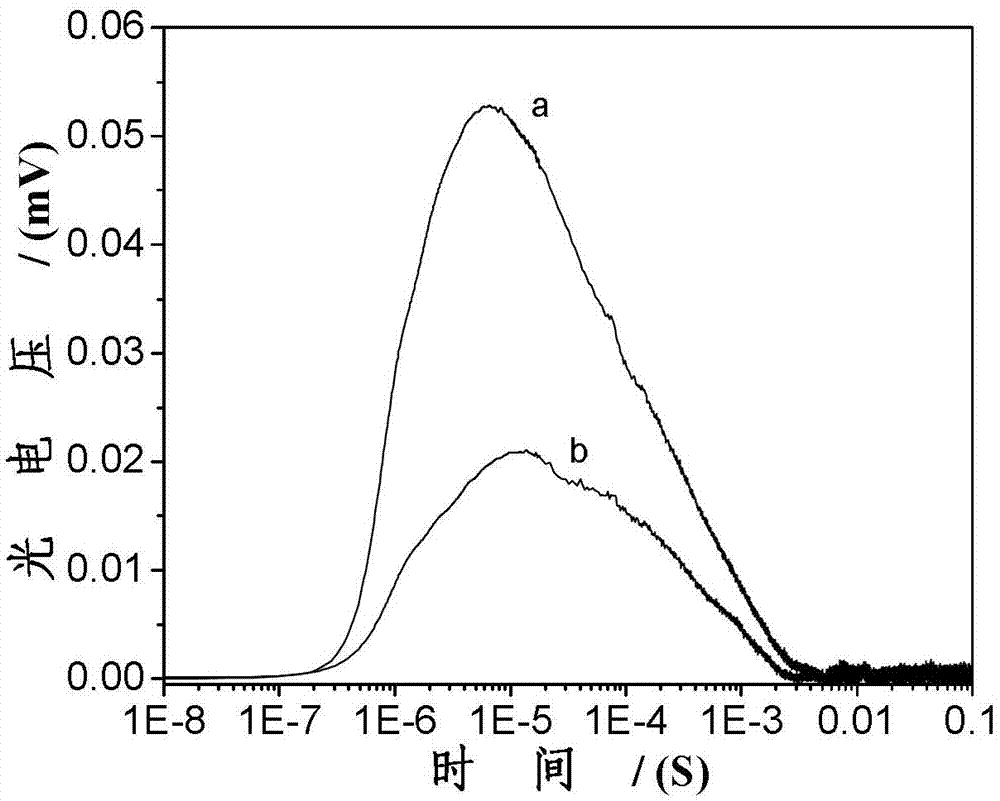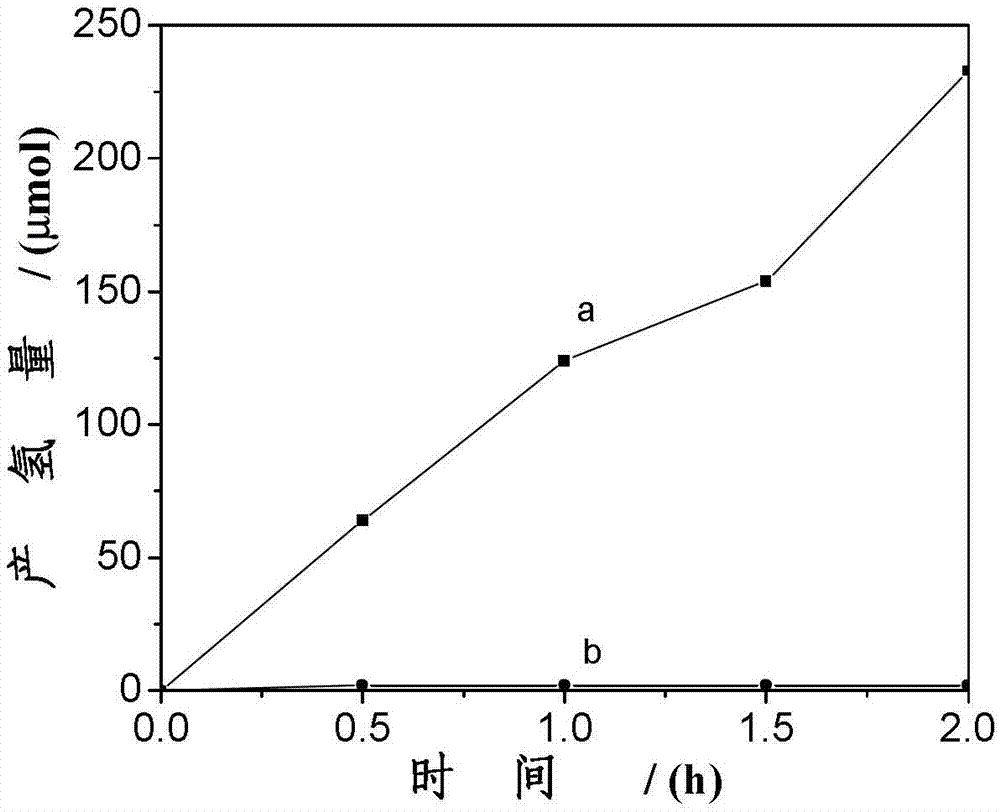Synthesis method of phosphoric acid bridged and compounded TiO2-BiVO4 nanometer photocatalyst
A nano-photocatalyst, tio2-bivo4 technology, applied in chemical instruments and methods, physical/chemical process catalysts, hydrogen production, etc., can solve the problems of poor hydrogen production activity, improve separation efficiency, avoid rapid recombination, load The effect of prolonging the carrier life
- Summary
- Abstract
- Description
- Claims
- Application Information
AI Technical Summary
Problems solved by technology
Method used
Image
Examples
specific Embodiment approach 1
[0019] Specific implementation mode 1: In this implementation mode, phosphate bridged composite TiO 2 -BiVO 4 The synthetic method of nano photocatalyst is carried out according to the following steps:
[0020] 1. Disperse 1 g of bismuth vanadate into an aqueous phosphoric acid solution with a concentration of 0.001 to 0.01 mol / L, then stir and evaporate to dryness under the condition of heating in a water bath at 80°C, grind, roast at 450°C for 0.5h, and grind to obtain phosphoric acid-modified bismuth vanadate;
[0021] Two, the phosphoric acid-modified bismuth vanadate obtained in step 1 is dispersed in the mixed solution that is made up of 20ml ethanol and 5ml distilled water, drips 0.5~2ml mass concentration under stirring condition and is the nitric acid of 65%, stirs 0.5h, Obtain solution A;
[0022] 3. Disperse 0.01-0.1ml of butyl titanate into 2ml of absolute ethanol and stir for 30min to obtain solution B;
[0023] 4. Add solution B obtained in step 3 dropwise to...
specific Embodiment approach 2
[0026] Embodiment 2: This embodiment differs from Embodiment 1 in that the concentration of the phosphoric acid aqueous solution in step 1 is 0.002-0.009 mol / L. Others are the same as in the first embodiment.
specific Embodiment approach 3
[0027] Embodiment 3: This embodiment differs from Embodiment 1 or Embodiment 2 in that the concentration of phosphoric acid aqueous solution in step 1 is 0.003-0.008 mol / L. Others are different from the first or second specific embodiment.
PUM
 Login to View More
Login to View More Abstract
Description
Claims
Application Information
 Login to View More
Login to View More - R&D
- Intellectual Property
- Life Sciences
- Materials
- Tech Scout
- Unparalleled Data Quality
- Higher Quality Content
- 60% Fewer Hallucinations
Browse by: Latest US Patents, China's latest patents, Technical Efficacy Thesaurus, Application Domain, Technology Topic, Popular Technical Reports.
© 2025 PatSnap. All rights reserved.Legal|Privacy policy|Modern Slavery Act Transparency Statement|Sitemap|About US| Contact US: help@patsnap.com



